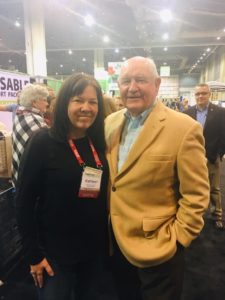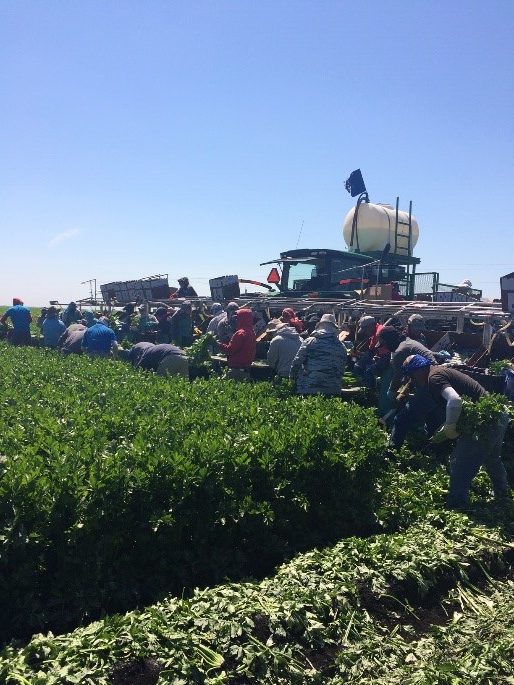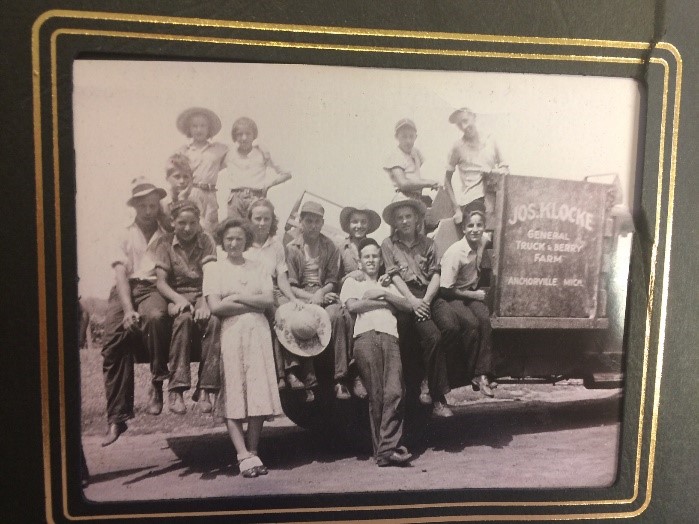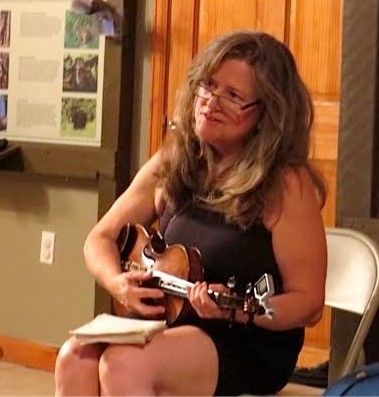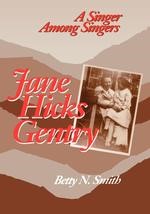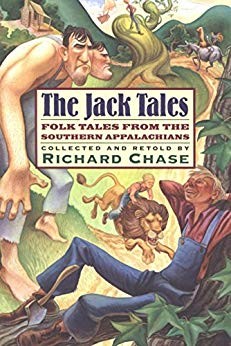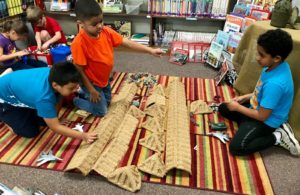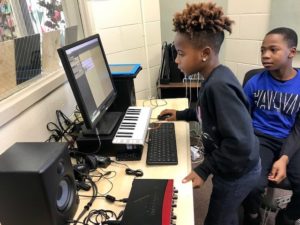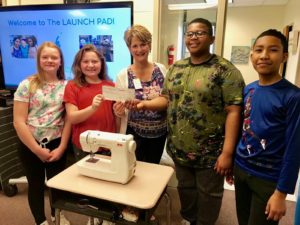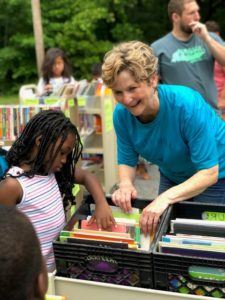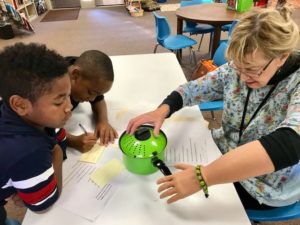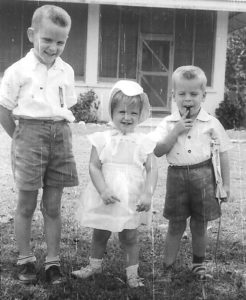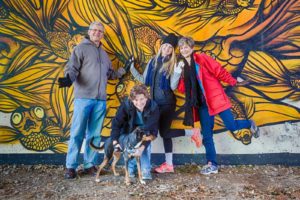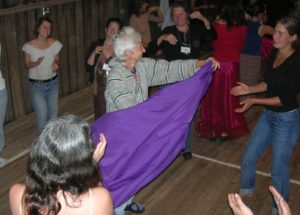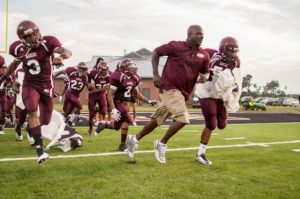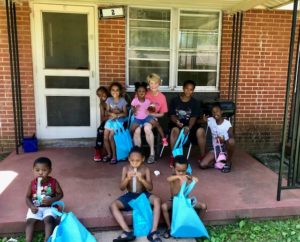By Joan Doggrell
Jesus left guidelines for his followers, many of them in the form of parables. A few are enigmatic, but for the most part, His meaning is quite clear. You don’t have to be a Biblical scholar to catch the drift of this passage:
Then the King will say to those on his right, “Come, you who are blessed by my Father, inherit the kingdom prepared for you from the foundation of the world. For I was hungry and you gave me food, I was thirsty and you gave me drink, I was a stranger and you welcomed me, I was naked and you clothed me, I was sick and you visited me, I was in prison and you came to me.
Then the righteous will answer him, saying, “Lord, when did we see you hungry and feed you, or thirsty and give you drink? And when did we see you a stranger and welcome you, or naked and clothe you? And when did we see you sick or in prison and visit you?”
And the King will answer them, “Truly, I say to you, as you did it to one of the least of these my brothers, you did it to me.” Matthew 25, 34-40
In this passage, Christ gives us straightforward instructions of how He wants us to live, but sometimes, following His directions is about as simple as assembling a piece of furniture by the manufacturer’s “easy” steps. It can be a temptation to just give up. However, St. Paul’s is not a parish of quitters. There are lots of folks at St. Paul’s that live out Christ’s love both inside the parish and outside in the Newnan community and the world beyond. Two such people are Bill and Dawn Harrison. I would like you to get to know them.
They both hail from Pittsburgh. They are high school sweethearts who have lived happily ever after for more than fifty years. They raised their four children in towns and cities from Florida to Maine. Everywhere they lived, they played major roles in the life of their parishes.
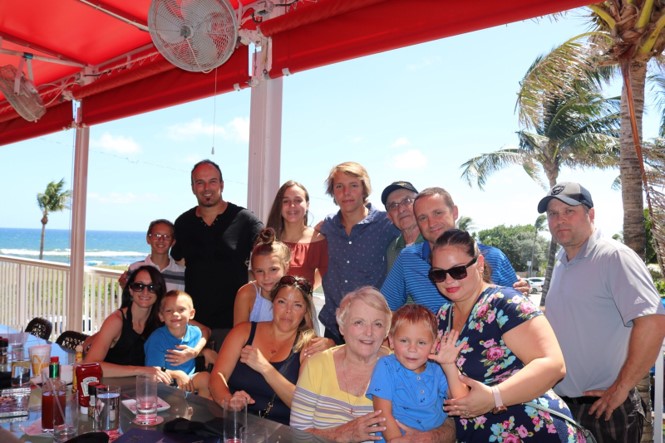
The Harrison family in Baca Raton celebrating the fiftieth birthday of their eldest.
Though brought up in different Christian sects, they have this in common: parents committed to their churches and communities.
“A lot of it gets down to upbringing,” said Bill. “Both of our families were heavily involved in church, and so were we from the time we were knee high to a grasshopper. As you go through life, moving different places, having good and bad experiences with churches – we’ve had both – your faith evolves. You realize that Matthew 25 tells us just what we’re supposed to do.”
“Bill’s right,” said Dawn. “I was taken to church every Sunday by my father. My mother was a sporadic attender. She had a lot of medical issues. But my dad went every Sunday. He was Junior Warden of St. Stephen’s for thirty years. (They didn’t change positions back then.) As a child, I built an altar in my bedroom. I had a little table with candles on it and everything.”
“I married into the Episcopal church,” said Bill. “I was raised Presbyterian. One of the jokes we share is, my mother had a hard time getting used to my being an Episcopalian – all that standing up and sitting down, all that kneeling, candles… my favorite saying of hers was ‘Communion once a quarter is plenty.’”
At St. Paul’s, Dawn leads the Bell Choir and the Children’s Choir and sings in the Parish Choir, as does Bill. She also plays the organ and the piano and occasionally subs for our organist and choir director Mason Copeland. So Dawn makes a major contribution to our music program, not only through her own talents but also by passing on our glorious sacred music heritage.
But that’s not all she does. She is there to help anybody who needs support for any reason: post-surgery, emotional, transportation. And she is a steady guide in personal emergencies.
I like lists. They keep me organized. So, to keep track of how Bill and Dawn are meeting their commitment to Christ, let’s organize their contributions under these hearings:
- Give food and drink to the hungry and thirsty.
- Welcome the stranger.
- Visit the sick.
- Clothe the naked.
- Visit the prisoners.
Give food and drink to the hungry and thirsty
“As we’ve gotten older, we see a lot of need in the church to reach out to people
in the community,” said Dawn. “Bill and I both deliver Meals on Wheels. I did it in Pittsburgh too, when I had four children. I would take all four of them with me. The people loved the kids.”
Welcome the stranger
I know Bill and Dawn welcome strangers. They were the first to greet Don and me when we walked into St. Paul’s. Dawn immediately recruited me for the choir!
“Just greeting a newcomer to church is a big ministry,” said Dawn.
But Dawn goes further. She understands what it means to be a stranger to human contact, to be alone during life’s trials.
“I was parish administrator at Peter and Paul in Marietta,” said Dawn. “The priest and associate would be gone a lot. Strangers would come in the office wanting to speak to one of the clergy. Before I could say, ‘Would you like me to make you an appointment?’ they would be sitting down and unburdening themselves. And I’m thinking, these people are really hurting. They need somebody to listen to them. And I think that was the beginning of my decision to reach out to the stranger in need.”
Visit the sick
My husband Don has been hospitalized several times since we’ve been members of St. Paul’s. Bill and Dawn were two of many St. Paul’s folks who visited him. And Bill’s Lay Eucharist Visitor ministry brings him to the homes of the sick and the nursing homes of the elderly.
But sickness can mean more than physical disease. Two persistent illnesses of modern life are loneliness and depression. Dawn and Bill, with their kind natures and formal training, are well equipped to treat these forms of sickness and have been doing so for years.
If you are involved in any kind of personal emergency, you want Dawn or Bill at your side. They will know what to do. Dawn attributes their skill to training as Stephen Ministers. The purpose of the Stephen Ministry is to provide companionship to a person going through a crisis: a death, a divorce, a job loss. Dawn and Bill took their training at St. Gregory’s in Boca Raton, Florida.
“Six of us were candidates, and we went through fifty hours of training” said Dawn. “We would visit with people in need once a week for an hour or longer. The main thing was just to listen. But the ministry also taught us how to deal with certain issues if we felt that the person was not quite mentally stable. They taught us to get in touch with the proper authority. That, to me, was very rewarding.”
“When we were in Florida, I had three people I ministered to, and Bill had two. My favorite and last one was the mother-in-law of our associate priest. He felt she would be lonely because he and his wife went to Maine in the summer. He asked me if I would be a Stephen Minister to her and visit her once a week, which I did. Usually you minister to someone for two years. But we became such great friends that after two years, I said, ‘Tina, you really don’t need a Stephen Minister. How about I just come as a friend?’ So I continued to visit her every week, and we just enjoyed each other’s company. In fact, when we moved back here to Newnan, I sent her a letter every week. I usually wrote it on Tuesday, the day I would visit her.
“She passed away in January two years ago. It so happened that I was going to be flying down to Boca Raton on the day of her service. I flew in, and my daughter brought me to the Catholic church where she was a member. I walked in at the Gospel reading. Tina’s daughter, when she saw me, just dissolved into tears. She gave me one of Tina’s little angel statues, which Tina used to collect. I have it on the mantel. I look at it all the time and it reminds me of her.
“The Stephen Ministry is really rewarding, and I would like to see something like that get started at St. Paul’s. We have a lot of people who are widowed, divorced, or having other life crises. New babies arrive, and the mothers may be going through post-partum depression and just need to talk to somebody. Bill and I have the skills to do that because we were taught.”
Clothe the naked
I’m giving Dawn and Bill a pass on this one, in the literal sense. With cheap clothing readily available at Goodwill and the Salvation Army, no one needs to be naked. Nevertheless, there are still clothing needs.
“One of my heroes is a fellow we met up in Marietta at St. Peter and St. Paul,” said Dawn. “His name was Dick Hillman. Every winter he would collect socks from people and go to downtown Atlanta and give socks to the homeless. I thought that was a great ministry. I don’t know how he got all the socks.”
“I used to go with him sometimes to the manufacturers and the retailers,” said Bill. “He would say ‘Hey, I’m doing this,’ and they would give him socks.”
But, like sickness, nakedness might be interpreted more broadly. One could be naked of dignity or respect. Bill and Dawn attend the funerals of babies that die under sad circumstances.
“Generally, it’s indigent families who can’t afford to bury their babies for one reason or another,” said Dawn. “Maybe the child has been beaten. Sometimes the families will be at the burials, and sometimes not. We just go to witness, Bill and I, and David Waldron too. The babies are in individual coffins and are prayed over.
“Holy Innocents Episcopal Church in Dunwoody spearheaded this ministry. It really struck a chord with me because I had lost a baby. I was in the hospital and didn’t get to see the child buried. So it just tugged at my heart that these babies would be laid to rest and nobody was going to be there.”
“Fulton County has a fulltime chaplain,” said Bill, “and part of his responsibility is indigent burials, both adults and children. What happens to indigent children and adults in Coweta County? Is there a program that provides a decent burial? It’s important to give them that dignity.”
Another form of nakedness is the lack of a roof over one’s head.
“Bill and I also did a ministry in Boca Raton called Family Promise, which takes in families that are homeless,” said Dawn. “Each church would take several families for a week. Our church had an old rectory where we were able to bring the families in the afternoon. We would greet them, play with the children, help them with homework, feed them dinner, and get them settled for the night. Then a bus would come in the morning and take them back to DelRay where the kids would go to school and the adults were able to do resumes and job applications.”
Visit the prisoners
Has Bill ever asked you for cookies? Dozens of them, six to a baggie? They are for his prison ministry called Kairos.
And what is Kairos?
According to their website, “Kairos Prison Ministry International, Inc. is a lay-led, interdenominational Christian ministry in which men and women volunteers bring Christ’s love and forgiveness to prisoners and their families. The Kairos programs take the participants on a journey that demonstrates the love and forgiveness of Jesus Christ. Kairos Prison Ministry is Christian in nature, although no religious affiliation is necessary to be a participant.” For further information see http://www.kairosprisonministry.org/about-kairos-prison-ministry.php
“The first time I heard of Kairos was at St. Paul’s,” said Bill. “A man named Ron Gillihan told a wonderful story. He had a son that was murdered. He wound up going to a prison to visit and forgive the person who killed his son. His experience led him to join the Kairos prison ministry.
“Once I started hearing about Kairos, it chased me around,” said Bill. “I was in Oklahoma on a consulting assignment for three years by myself pretty much. God just grabbed me by the scruff of the neck. I was in Kairos up there. Then when I moved back here, I was reminded of it at our men’s breakfast. Jeff Lamb came to the breakfast and mentioned the magic word.
“I was at a Kairos Prayer & Share meeting this morning. That’s kind of my heart, just watching those guys and hearing some of their faith stories. It’s the power of teaching people that there are no Lone Rangers in Christianity. You’ve got to have relationships, and you’ve got to have a group of people you can share with, your concerns, joys, sorrows. And that’s what we try to teach these guys.”
“I went to one of the Kairos closing on a Sunday afternoon,” said Dawn, “And to see the change in those men, listen to them speak, would just warm your heart. The Kairos volunteers hug them and give them the assurance that they’re loved. Some of them have never even touched a person before. That’s sad, because touch is very important to people.”
“We used to joke about how some of them come just for the cookies,” said Bill. “No doubt that’s sometimes the case. But they come for curiosity and then get the good stuff. The power comes when you can see guys of different backgrounds getting together like lifelong friends. At one table this morning there were two Hispanics, one Black and one White. Their heads were together and they were talking. That just doesn’t happen very often, even outside. I’m hoping that the relationship continues, and they can talk about really important stuff.
“One of the things we can do as followers of Christ is to get people to realize that there but for the grace of God go I! It’s so important for prisoners to feel they have somebody to talk to, pray with. It’s so easy to get in with the wrong crowd.”
Final Thoughts
“It’s become very important to me that we acknowledge that there are so many different faiths,” said Bill. “Denominations within Christianity is a whole different story, but we must be able to value other world religions. We are all children of God.”
“Many of the things Dawn and I do are religiously oriented, but there are other ways we can do ministry. For example, Meals on Wheels has no overt religious content. We need to value other efforts too, like the GED program. And then this new ministry that’s starting, NEST, that’s going to be important too. It’s a joint effort led by the Newnan City Church to provide a warm place to sleep for the homeless on freezing nights.”
“The other dimension is – and I firmly believe this –the joy you feel, whether it’s taking communion to somebody or helping somebody with a math problem. I think we need to be more effective in allowing people to have those kinds of experiences. It’s not altruistic. We joke about it in Kairos. We get much more than we give.
“I also think there’s a fellowship dimension to living that’s important. Not necessarily from a spiritual point of view. That comes in different ways for different people. But I think we undervalue the importance of close relationships. It’s like our Tuesday breakfast, and Daughters of the King – the purpose is to have a relationship and know that there are other people who care about the same things you care about. And even care about you. I can’t underestimate how important that is in living.”
“Somebody said once, God wants us to be more Christlike,” said Dawn. “We can do that. It doesn’t cost anything. Just be kind to people.”
Doing all the things that Bill and Dawn do would wear most of us out. But that doesn’t seem to happen to them.
“We persevere,” said Dawn. “It’s important. You have to think, what would this person do if he or she couldn’t call on me?”
So there you have “The Bill and Dawn Story.” Admirable folks, whom I try to emulate, but not unique. There are more like them at St. Paul’s Episcopal Church. Come join us and get to know their stories as well.

